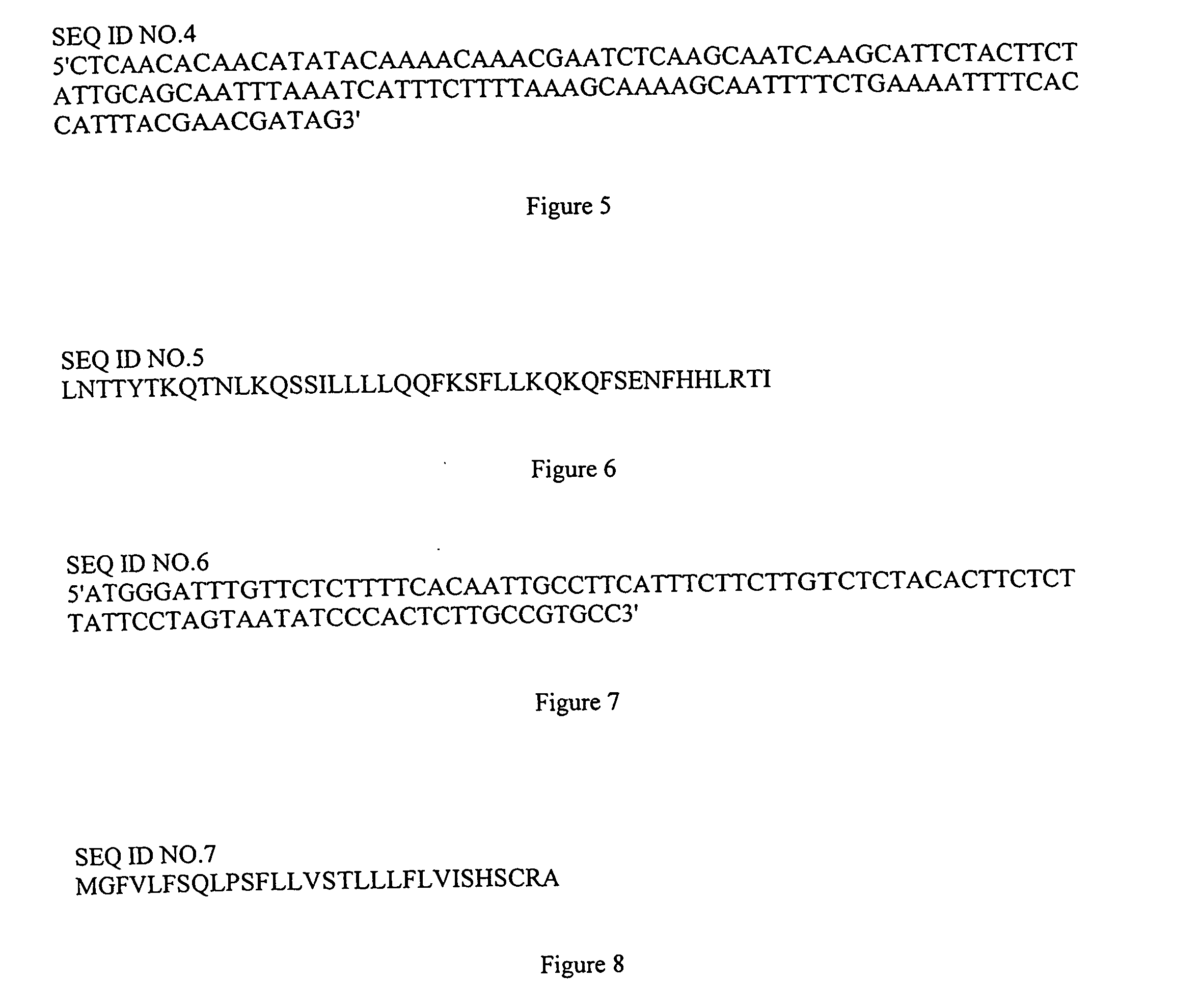Methods and Compositions for Expressing Proteins In Plants
- Summary
- Abstract
- Description
- Claims
- Application Information
AI Technical Summary
Benefits of technology
Problems solved by technology
Method used
Image
Examples
example 1
Expression Vectors
[0110]The L1 gene from canine oral papillomavirus (COPV) (Suzich et al., 1995), which encodes the primary capsid protein L1, was modified to use plant-preferred codons, and to eliminate potential cryptic splicing sites and polyadenylation signal-like internal sequences (Perlak et al., 1991) by Aptagen, Inc, Herndon, Va. The custom-synthesized version of the COPV L1 gene was designated “vcp” (GenBank accession no. DQ508357).
[0111]Four constructs based on the PVX amplicon vector pGR106 (Lu et al., 2003) were made to express the L1 protein in cytosol, and to target the protein to the chloroplast, the endoplasmic reticulum (ER), or the apoplast, respectively (FIG. 1). The vcp gene was inserted at the blunted NotI site in pGR106 to make “pKA19” (FIG. 1). For chloroplast targeting, the chloroplast transit peptide (CTP) coding sequence of ribulose-1,5-bisphosphate carboxylase oxidase (rubisco) small subunit from tobacco (GenBank accession no. X02353) was obtained by PCR a...
example 2
Agroinfiltration of Tobacco Plants
[0112]Experiments were carried out using Nicotiana tabacum cv. Xanthi, N. benthamiana, and homozygous transgenic TEV-B plants (made in the tobacco cv. Xanthi) containing a modified version of the P1 / HC-Pro gene from TEV that suppresses post-transcriptional gene silencing, but which does not cause deleterious changes in the plant phenotype associated with the wild-type version of P1 / HC-Pro. Preparation of Agrobacterium cultures and infiltration of tobacco plants were carried out as described (English et al., 1997) with the following modifications. The recombinant bacteria were grown overnight in 50 ml of LB medium containing 100 μM acetosyringone and 10 μM MES (pH 5.6), and subsequently were pelleted by centrifugation at 4000 g for 5 min. The pellets were resuspended in the infection medium (Murashige and Skoog salts with vitamins, 2% sucrose, 500 μM MES (pH 5.6), 10 μM MgSO4, and 100 μM acetosyringone) to OD600=0.4-1.0 and subsequently held at 28° C...
example 3
Inoculation of Plants by Wound-and-Agrospray
[0113]Agrobacterium harboring pKA20 was prepared as described in Example 2 but the infection medium was supplemented with Tween 20 [0.01% (v / v)]. The suspension of Agrobacterium was sprayed onto plants using an air-brush, Model 200 NH, connected to a compressor that produced 20-50 PSI pressure (Badger Air-Brush Co, Illinois, USA). Plants were wounded by slightly scoring the adaxial surfaces of upper leaves with the edge of a plastic pot label.
PUM
| Property | Measurement | Unit |
|---|---|---|
| Time | aaaaa | aaaaa |
| Composition | aaaaa | aaaaa |
Abstract
Description
Claims
Application Information
 Login to View More
Login to View More - R&D
- Intellectual Property
- Life Sciences
- Materials
- Tech Scout
- Unparalleled Data Quality
- Higher Quality Content
- 60% Fewer Hallucinations
Browse by: Latest US Patents, China's latest patents, Technical Efficacy Thesaurus, Application Domain, Technology Topic, Popular Technical Reports.
© 2025 PatSnap. All rights reserved.Legal|Privacy policy|Modern Slavery Act Transparency Statement|Sitemap|About US| Contact US: help@patsnap.com



